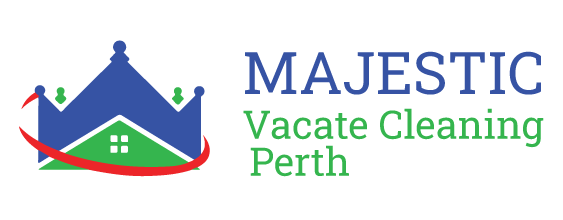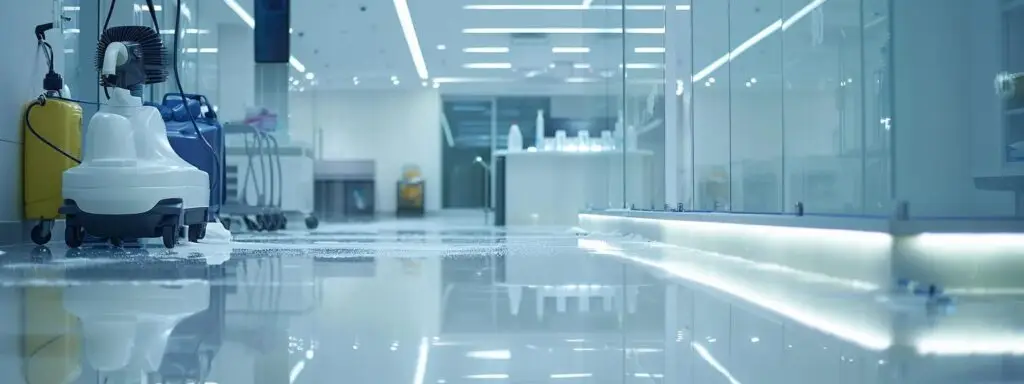Effective Tips to Mildew Clean Your Home Fast
When moving out of a rental property, mildew problems can be a major headache. Mildew not only impacts the overall appearance of a space but can also pose health risks such as shortness of breath and allergic reactions. Alliance Cleaning Services offers professional cleaning solutions that target mold and mildew clean up, using proper techniques and industry-approved products. This article provides effective tips on identifying the sources of mildew, using proper cleaning solutions, implementing preventive measures, applying quick fixes, regularly monitoring your space, and knowing when to seek professional help. These strategies are designed to ensure a clean, healthy environment and help you secure your bond back.
Key Takeaways
- Identify mildew sources by inspecting key areas such as bathrooms, kitchens, and attics for moisture or water damage.
- Use effective cleaning solutions like vinegar mixtures and commercial mildew cleaners along with protective equipment.
- Implement preventive measures including proper ventilation and dehumidification to reduce recurring mildew growth.
- Schedule routine inspections and seek professional remediation for severe mold issues.
- These practical approaches ensure a healthier, cleaner living space when vacating a rental.
Understanding Mildew: The Foundation of Effective Cleaning
Before diving into specific cleaning techniques, it’s crucial to understand what you’re dealing with. Mildew is a type of surface mold that thrives in warm, humid conditions and can quickly spread throughout your home if not addressed promptly.
Health Implications and Urgency
Mildew exposure can cause respiratory issues, allergic reactions, and particularly affect individuals with pre-existing conditions. When preparing to move out, addressing mildew concerns is not just about aesthetics—it’s about health and securing your bond return.
Comprehensive Source Identification Strategy
Comprehensive Source Identification Strategy
Regular identification of mildew sources is essential for proper remediation. Homeowners should inspect frequently used areas, which are prone to moisture buildup and mildew growth.
High-Risk Areas: Bathrooms and Kitchens

Inspect Your Bathroom and Kitchen Areas Regularly
Bathrooms and kitchens are high-risk zones for mildew due to constant exposure to water. Tiles, grout, and walls in these areas may trap moisture leading to mold and mildew. Regular cleaning using disinfectants and proper ventilation prevents buildup. For instance, using a disinfectant spray on damp surfaces every week reduces the likelihood of mildew formation. Additionally, replacing old caulking and sealing gaps can significantly reduce moisture penetration, thereby limiting mildew growth. Homeowners should also inspect sinks, bathtubs, and countertops to ensure long-term cleanliness.
HVAC Systems: Hidden Culprits
Humidifiers and air conditioners are common culprits in spreading mold spores if not properly maintained. Over time, the moisture inside these appliances can support mold colonies, which, when circulated, affect indoor air quality and can cause shortness of breath. Regular cleaning of filters, water tanks, and ductwork is necessary. Manufacturers often recommend cleaning these devices monthly. Keeping these systems dry and using appropriate cleaning agents helps in mold mildew remediation and improves overall air quality.
Structural Vulnerabilities and Ceiling Concerns
Windows and doors that leak during rain or high humidity can create hidden pockets of moisture. Inspect seals and frames for visible water damage, and address these issues promptly to prevent mildew growth. Leaks can also lead to condensation on walls and floors, fostering an environment conducive to mold development. Routine checks with a damp cloth can reveal early warning signs.
Ceiling areas require special attention, as they often develop mold patches that can be challenging to clean safely. When removing ceiling mould before moving out, proper ladder safety and protective equipment become even more critical to prevent accidents and ensure thorough cleaning. Fixing these leaks is critical for ensuring a dry environment and effective mildew clean up.
Basement and Attic Considerations
Attics and basements are susceptible to moisture intrusion due to their location. Poor insulation, roof leaks, and faulty drainage systems can allow water entry, creating ideal conditions for mold growth. Regular inspections, coupled with the use of a dehumidifier, help to regulate the humidity levels in these areas. Addressing structural issues early allows for preventative maintenance and reduces the likelihood of severe mold and mildew damage. Homeowners should note any musty odor or discoloration on walls.
Indoor Plants and Plumbing Systems
Despite their aesthetic and air-purifying benefits, houseplants can develop mold on their soil surface, especially in humid conditions. Overwatering is a common cause; therefore, ensuring proper drainage and using clean, well-aerated soil can mitigate the issue. For added protection, periodically remove and discard any visible mold from the soil surface. Houseplants should be inspected regularly as part of an overall strategy to prevent mildew.
Plumbing issues, even minor leaks, can lead to extensive water damage and create ideal conditions for mildew growth. Regularly check under sinks, around toilets, and behind appliances for signs of dampness or water stains. Early detection and repair of leaks can prevent long-term damage and reduce the risk of mold proliferation. Homeowners should consider hiring professionals for a thorough examination if persistent moisture issues are found.
Proven Cleaning Solutions and Techniques
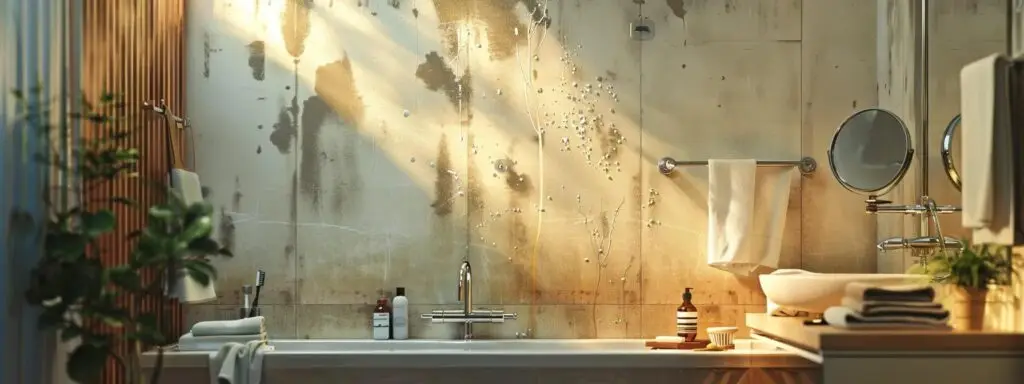
The removal of mildew requires the use of appropriate cleaning solutions that are both effective and safe for health and surfaces. Using proven methods and following safety practices can significantly improve the cleaning outcome.
Prepare a Vinegar Mixture for Natural Cleaning
Vinegar is a natural disinfectant that can kill mildew effectively without harsh chemicals. A solution of one part vinegar to one part water works well on non-porous surfaces. This mixture acts as a gentle cleaner for areas like tiles and countertops, reducing the spread of cladosporium spores and other fungi. Use a sponge to apply the solution, allowing it to sit for a few minutes before wiping off.
Use Baking Soda for Tough Mold Spots
Baking soda is excellent for removing stubborn mildew stains, especially on porous surfaces like wood. Mix baking soda with water to create a paste and apply it directly to mildew spots. The mildly abrasive texture helps remove mildew without damaging surfaces. After scrubbing, rinse with water and dry thoroughly using a clean towel to prevent moisture retention.
Apply Commercial Mildew Cleaners Safely
Commercial mildew cleaners are formulated with potent disinfectants that can tackle persistent mildew effectively. When using products such as Clorox mold and mildew cleaner, always follow manufacturer instructions and wear personal protective equipment like eye protection and masks. These products are ideal for cleaning large areas and heavily affected zones, ensuring efficient mold and mildew removal.
Incorporate Hydrogen Peroxide for Disinfection
Hydrogen peroxide is an effective disinfectant that not only kills mildew spores but also breaks down odor and stains. Apply a 3% solution using a spray bottle on affected areas, let it sit for several minutes, then rinse thoroughly. Hydrogen peroxide is particularly useful for cleaning bathrooms and kitchens, where moisture is abundant. Its application helps in disinfecting surfaces and preventing future mildew recurrence.
Rinse Surfaces Thoroughly After Cleaning
After applying any cleaning solution, it is essential to rinse well to remove any residual chemicals. Leaving cleaning agents on surfaces can lead to streaks and potentially compromise the integrity of finishings on wood, tile, or drywall. Rinse with clean water and then dry using a microfiber towel to ensure that the area is completely moisture-free.
Ensure Proper Protective Gear During Cleaning
Before starting any cleaning process, it is important to wear proper personal protective equipment. Items such as gloves, masks, and eye protection are essential for preventing exposure to mold spores and harsh chemicals. This safety measure is crucial whether homeowners are using natural solutions like vinegar or commercial products for mildew remediation.
Implement Preventive Measures to Keep Mildew Away

Prevention is key to maintaining a mildew-free home. Regular maintenance and proactive measures can minimize moisture buildup and reduce the risk of recurring mold problems.
Natural Cleaning Approaches
Vinegar is a natural disinfectant that can kill mildew effectively without harsh chemicals. A solution of one part vinegar to one part water works well on non-porous surfaces. This mixture acts as a gentle cleaner for areas like tiles and countertops, reducing the spread of cladosporium spores and other fungi. Use a sponge to apply the solution, allowing it to sit for a few minutes before wiping off.
For homeowners seeking environmentally-friendly alternatives, non-toxic mold removal methods offer effective solutions using household ingredients that are safe for families and pets while still delivering professional-quality results.
Baking Soda Applications
Baking soda is excellent for removing stubborn mildew stains, especially on porous surfaces like wood. Mix baking soda with water to create a paste and apply it directly to mildew spots. The mildly abrasive texture helps remove mildew without damaging surfaces. After scrubbing, rinse with water and dry thoroughly using a clean towel to prevent moisture retention.
Commercial Cleaning Solutions
Commercial mildew cleaners are formulated with potent disinfectants that can tackle persistent mildew effectively. When using products such as Clorox mold and mildew cleaner, always follow manufacturer instructions and wear personal protective equipment like eye protection and masks. These products are ideal for cleaning large areas and heavily affected zones, ensuring efficient mold and mildew removal.
Hydrogen Peroxide Disinfection
Hydrogen peroxide is an effective disinfectant that not only kills mildew spores but also breaks down odor and stains. Apply a 3% solution using a spray bottle on affected areas, let it sit for several minutes, then rinse thoroughly. Hydrogen peroxide is particularly useful for cleaning bathrooms and kitchens, where moisture is abundant. Its application helps in disinfecting surfaces and preventing future mildew recurrence.
Essential Safety and Finishing Steps
After applying any cleaning solution, it is essential to rinse well to remove any residual chemicals. Leaving cleaning agents on surfaces can lead to streaks and potentially compromise the integrity of finishings on wood, tile, or drywall. Rinse with clean water and then dry using a microfiber towel to ensure that the area is completely moisture-free.
Before starting any cleaning process, it is important to wear proper personal protective equipment. Items such as gloves, masks, and eye protection are essential for preventing exposure to mold spores and harsh chemicals. This safety measure is crucial whether homeowners are using natural solutions like vinegar or commercial products for mildew remediation.
Strategic Prevention Measures
Mildew removal solution and tools on a clean surface for effective cleaning.
Prevention is key to maintaining a mildew-free home. Regular maintenance and proactive measures can minimize moisture buildup and reduce the risk of recurring mold problems.
Humidity Control Strategies
Keeping humidity under control is one of the most effective ways to prevent mildew growth. Use a dehumidifier in damp areas and monitor indoor humidity with a hygrometer. Maintaining home humidity levels below 50 percent reduces moisture on surfaces where mildew can thrive. This approach not only prevents mildew growth but also improves overall indoor air quality by reducing the concentration of mold spores.
Ventilation Enhancement
Effective airflow can significantly curb moisture accumulation. Installing exhaust fans or opening windows in the bathroom, kitchen, and basement helps dry out humid air and prevent mildew from taking hold. Enhanced ventilation in moist areas of your home creates an environment where moisture cannot accumulate sufficiently to support mold growth.
Dehumidification Systems
Dehumidifiers help manage moisture levels, especially in basements and other enclosed areas. Regular use of these devices not only prevents mildew growth but also improves overall indoor air quality by reducing the concentration of mold spores. Use dehumidifiers for excess moisture control in areas where natural ventilation is insufficient.
Structural Sealing
Proper sealing around windows and doors can minimize water intrusion during rainy weather. Applying weatherproof sealants and caulking gaps helps maintain a dry interior, making it less likely that mildew will form. Seal windows and doors to prevent water entry, which is crucial for long-term mildew prevention.
Storage and Fabric Care
Mildew can develop on fabrics stored in damp conditions. Ensure that items such as towels and upholstered furniture are kept in dry, ventilated spaces. Using moisture absorbers in closets can help reduce humidity and protect your belongings. Store fabrics and clothes in dry areas to prevent mold from establishing on organic materials.
HVAC Maintenance
Heating, ventilation, and air conditioning systems can harbor mildew if not maintained properly. Cleaning and changing filters regularly, along with professional HVAC maintenance, ensures that the system is free from mold buildup and provides clean air throughout the home. Regular cleaning and maintenance of HVAC systems prevents the circulation of mold spores throughout your living space.
Room-Specific Quick Fix Solutions
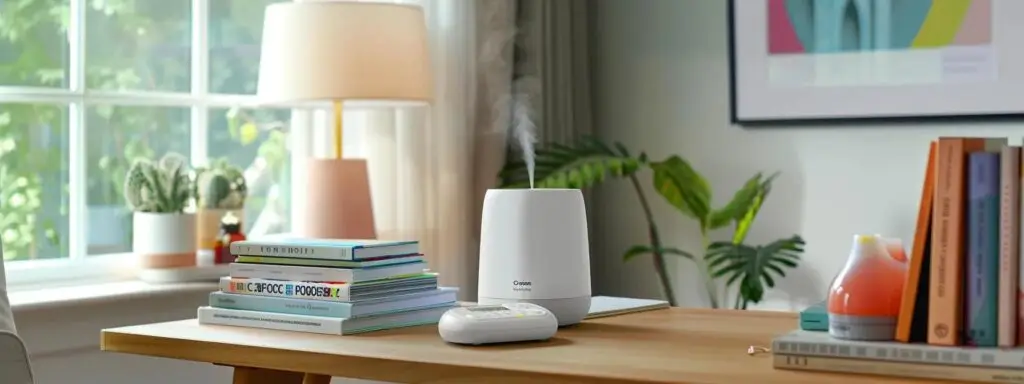
When mildew is discovered, quick interventions can prevent further spread and damage. Addressing the issue promptly minimizes both health risks and remediation costs.
Bathroom Solutions
Shower curtains are prone to mildew due to constant exposure to moisture. Regularly washing them in hot water with dishwashing liquid and a bit of vinegar helps remove mold spores and maintain hygiene. Hang them in a well-ventilated area to dry fully. Clear your shower curtain with a simple wash to maintain bathroom cleanliness.
Grout lines are often the most affected by mildew. A paste made from baking soda and water, applied to the grout and scrubbed with a brush, can break down mold. Follow up with a rinse and dry thoroughly to prevent moisture retention. Deep clean your bathroom tiles and grout lines regularly to prevent mildew establishment.
Living Areas and Upholstery
Carpets and upholstered surfaces can absorb moisture and support mildew growth. Use a combination of baking soda and a mild detergent, then blot the area with a sponge. Ensure that the fabric dries completely by using fans or opening windows. Treat carpets and upholstery with specific solutions designed for organic materials that can harbor mold spores.
Kitchen Maintenance
Kitchens, due to their grease and moisture, require regular deep cleaning. Steam cleaning not only disinfects surfaces but also helps remove embedded mildew spores. This method is effective for cleaning countertops, sinks, and floors, ensuring a hygienic cooking space. Refresh your kitchen with a steam cleaning routine to eliminate both visible mildew and hidden spores.
Wall Treatment
Walls affected by mildew can be cleaned using a diluted solution of dishwashing liquid. Apply the solution with a sponge, gently scrub the mildew spots, and rinse with clean water. Dry the area with a towel to prevent any residual moisture, maintaining a healthy environment. Remove mildew from walls with easy detergents that won’t damage paint or wallpaper finishes.
Structural Repairs
In severe cases, mildew can damage building materials like drywall and insulation. When these materials show signs of extensive mold, consider replacing them to eliminate the source of mildew and prevent further contamination. Replace affected drywall or insulation as needed to ensure complete mildew elimination.
Understanding the complete scope of mold problems helps homeowners make informed decisions about when DIY cleaning is sufficient versus when professional intervention is necessary. This knowledge is particularly important when tackling comprehensive DIY mould cleaning projects that require systematic approaches and proper safety protocols.
Systematic Inspection and Monitoring
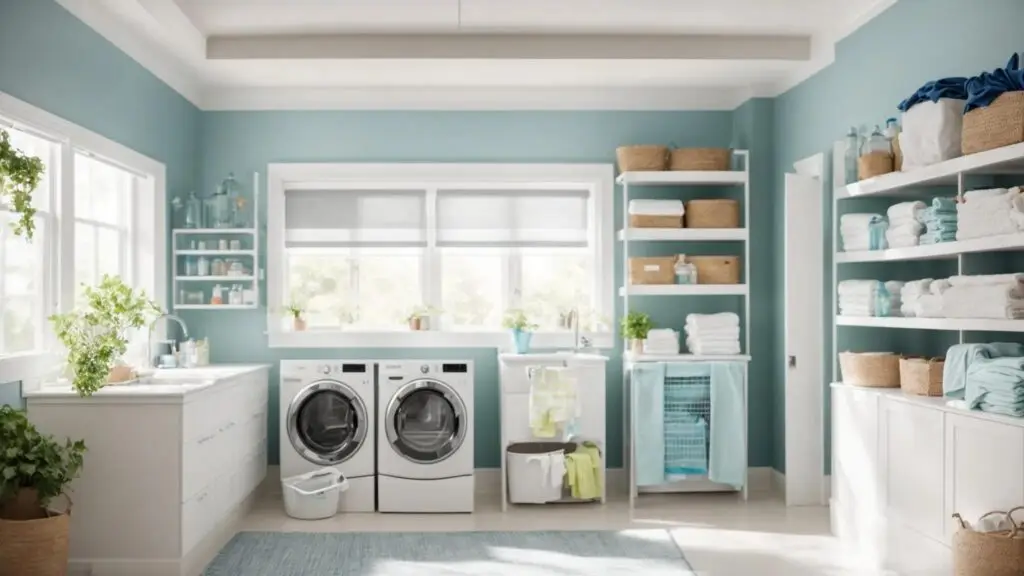
Routine inspections are essential in identifying mildew before it becomes a major issue. Setting up a home maintenance checklist and scheduling periodic professional inspections can save homeowners from costly repairs later.
Monthly Maintenance Protocols
A monthly checklist helps monitor critical areas such as bathrooms, kitchens, attics, and basements. Homeowners should note any signs of moisture, discoloration, or a persistent musty odor. Early detection enables prompt cleaning and minor repairs that prevent mold proliferation. Set up a monthly home maintenance checklist to ensure consistent monitoring of high-risk areas.
Professional Assessment Scheduling
Professional inspectors have the expertise to identify hidden moisture and mold issues, ensuring that potential problems are addressed before they escalate. Scheduling inspections every season provides a comprehensive overview of the home’s condition, particularly in areas susceptible to water leakage or humidity. Insist on seasonal professional inspections to catch issues that untrained eyes might miss.
Family Education and Awareness
Educating all family members about the signs of mildew and appropriate preventive measures creates a proactive environment. Understanding what to look for in everyday spaces can help catch issues early. Practical training on how to handle minor cleaning tasks and recognize when professional help is needed is a valuable investment in your home’s health. Train family members on mold awareness to create a collaborative approach to home maintenance.
Documentation and Tracking
Documenting any signs of mildew, such as discoloration or a damp smell, helps in monitoring trends over time. This record can be useful when consulting professionals or taking specific actions during routine maintenance. Keep track of any signs of mildew appearance to identify patterns and recurring problem areas.
Maintaining a log of cleaning activities and inspections ensures consistency in preventive measures. This documentation is also beneficial during property inspections when moving out, as it demonstrates proactive cleaning efforts to potential landlords. Document all cleaning and inspection efforts for reference during bond inspections.
Environmental Monitoring
Changes in local weather patterns or nearby construction can affect your home’s humidity levels. Staying informed allows homeowners to adjust preventive measures accordingly, ensuring that indoor environments remain dry and mildew-free. Stay informed about local environmental changes that might impact your home’s moisture levels.
Professional Intervention Guidelines
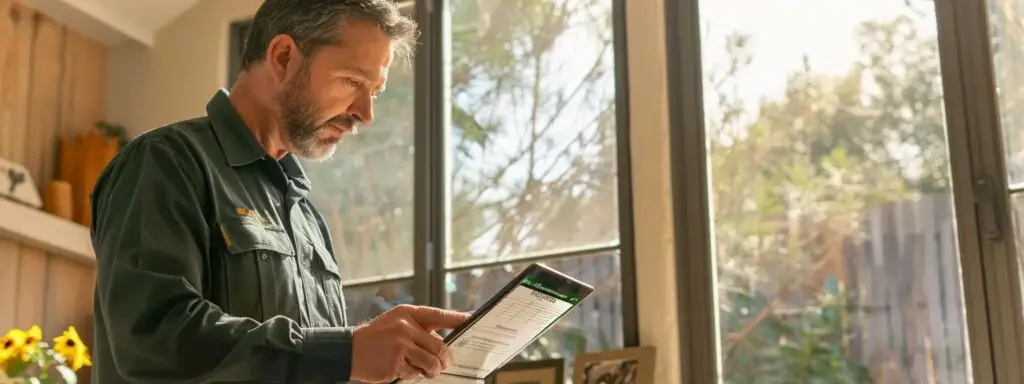
In cases where mildew is widespread or persistent, professional assistance is recommended. Expert mold remediation can resolve severe issues and provide long-term solutions to prevent recurrence.
Research and Selection Process
Begin by researching the best mold remediation companies near me. Look for companies with verifiable positive reviews, certifications, and a proven track record in handling extensive mildew clean up projects. This research helps ensure that the professional service is reputable and effective. Research local mold removal experts with positive reviews to ensure quality service delivery.
Cost Analysis and Service Evaluation
Mold remediation costs and services vary significantly. Request detailed quotes from several companies to compare their methods, equipment used (such as HEPA air purifiers), and service guarantees. Investing in thorough remediation is essential to eliminate the mildew permanently. Evaluate costs and services of mold remediation to make informed decisions about professional intervention.
For complex situations involving extensive contamination, understanding professional mold remediation processes helps homeowners prepare for what to expect and ensures they can make informed decisions about the scope of work required.
Health Risk Assessment
Professional mold remediation companies can also advise on potential health risks if the mildew includes harmful species like cladosporium. This discussion should include measures to mitigate shortness of breath and other respiratory issues, ensuring a safer living environment post-remediation. Discuss health risks associated with mold exposure to understand the urgency of treatment.
When dealing with extensive mold problems that require professional oversight, homeowners benefit from comprehensive mold removal guidance that covers everything from initial assessment through final verification of successful remediation.
Safety Protocol Verification
During professional treatment, verify that contractors use proper personal protective equipment and follow safe remediation protocols to prevent contamination spread. This precaution includes using masks, eye protection, and appropriate ventilation to ensure household safety. Ensure safety protocols are followed during treatment to protect your family’s health.
Post-Treatment Verification
After remediation, request testing to confirm that mildew has been eliminated completely. Documentation from post-treatment inspections provides reassurance and may be required for bond return or resale purposes. Establishing a follow-up maintenance plan with the service provider can protect your investment and ensure lasting cleanliness. Ask for post-remediation testing for assurance that the problem has been completely resolved.
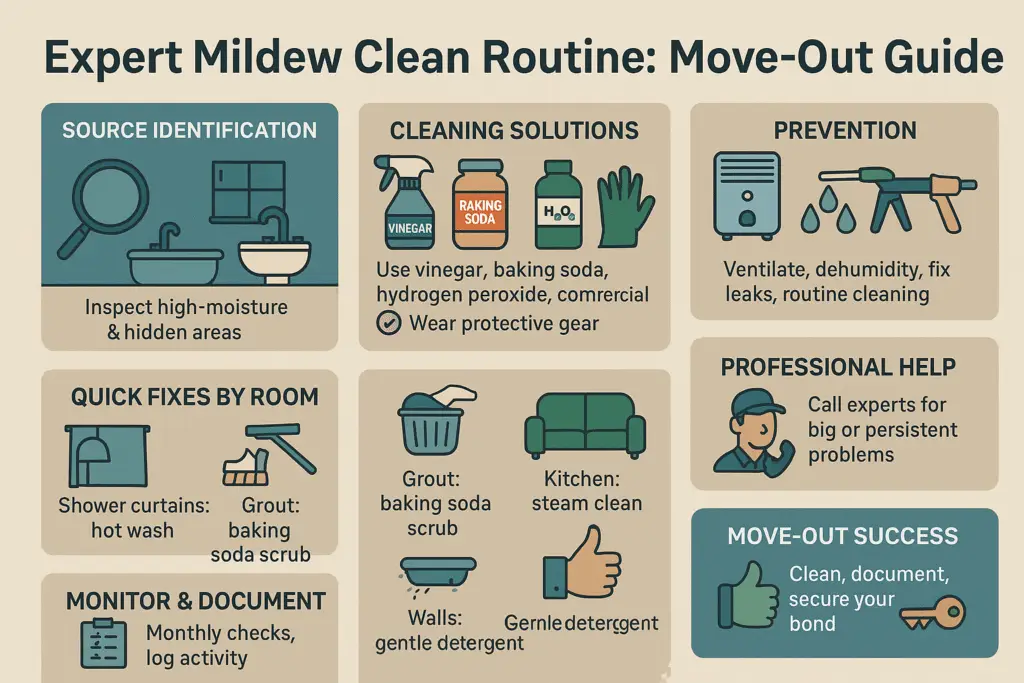
Frequently Asked Questions
Q: How often should I inspect my home for mildew?
A: It is recommended to inspect high-moisture areas like bathrooms and kitchens monthly, with seasonal professional inspections for thorough assessments.
Q: What natural cleaning solutions work best for mildew removal?
A: Vinegar diluted with water and baking soda paste are effective natural remedies for mildew on surfaces while being safe for routine use.
Q: When should I call a professional for mold remediation?
A: If mildew covers a large area or reappears repeatedly despite cleaning efforts, consulting a professional mold remediation service is advised.
Final Thoughts
Majestic Vacate Cleaning Perth emphasizes the importance of identifying mildew early and employing efficient cleaning solutions to achieve a spotless environment. Regular checks, proper ventilation, and preventive measures play crucial roles in minimizing mildew growth. Homeowners should not hesitate to engage professional cleaners for persistent cases, ensuring a thorough and lasting clean. By following these effective tips, you create a healthier indoor space, safeguard your belongings, and ensure a smooth move-out process.
